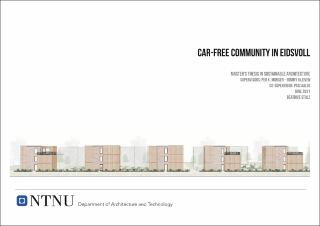| dc.contributor.advisor | Monsen Per | |
| dc.contributor.advisor | Kleiven Tommy | |
| dc.contributor.advisor | Aalto Pasi | |
| dc.contributor.author | Stolz, Béatrice | |
| dc.date.accessioned | 2021-09-14T16:03:10Z | |
| dc.date.available | 2021-09-14T16:03:10Z | |
| dc.date.issued | 2021 | |
| dc.identifier | no.ntnu:inspera:85025858:46960928 | |
| dc.identifier.uri | https://hdl.handle.net/11250/2776575 | |
| dc.description.abstract | Ifølge Parisavtalen, vedtatt av 196 land i Paris 12. desember 2015, er det nødvendig å begrense global oppvarming til under 2°C. Utslipp av CO2 og klimagasser er primært årsakene til global oppvarming og klimaendringer. Norge har, i tillegg til dette, satt seg mål om å bli klimanøytrale innen 2030. Ettersom bygningsbransjen står for 38% av klimagassutslippene, er det en utfordring for arkitekter, designere og ingeniører å finne nye miljøvennlige løsninger.
Etter bygningsbransjen står transportsektoren for 32% av klimagassutslippene. Norge er et langstrakt land med spredd befolkning, dette gir et stort behov for reising. Idag er det regjeringen sitt ansvar, og byplanleggernes utfordring å øke befolkningstettheten i byene og skape et mer sentralisert mønster, samtidig som de skal oppfordre folk til å redusere bruk av privatbiler og heller fremme bruk av kollektivtransport.
Moelven trevareindustri flytter fra Eidsvoll Verk, 60 km utfor Oslo, til en ny lokasjon. Dette nye området har et areal på 119 000 kvadratmeter, delt i to av en elv. I denne masteroppgaven analyseres en liten del av dette området (42 000 kvadratmeter) for å undersøke mulighetene for å bygge et nytt bærekraftig nabolag, i tråd med aktuelle utfordringer. Økt befolkningstetthet uten å miste kvalitet, redusere bruk av privatbil ved å fremme gå mulighetene i nærområdet, øke det sosiale aspektet i nabolaget, og bruk av bærekraftig bygningskonstruksjon er hovedmål i dette prosjektet.
I første del av masteroppgaven undersøkes disse konseptene for å forstå og dra grunnlinjer for prosjektet. I andre del av masteroppgaven utredes prosjektet i henhold til det som ble gjort i første del. | |
| dc.description.abstract | According to the Paris Agreement, voted by 196 countries in Paris on December the 12th 2015, it is necessary to limit global warming below 2°C. CO2 emissions and greenhouse gases are primary drivers of global warming and climate change. In addition to that, Norway has set the goal of being carbon neutral by 2030. The building industry being responsible for 38% of greenhouse gases emissions, it is a challenge for architects, designers, and engineers to think about new solutions for a better environment.
Behind the building industry, the transportations are responsible for 32% of greenhouse gases emissions. Norway being a big country with a spread population, it generates considerable travel demand. Today, it is the role of the government and the challenge of city planners to densify the city and create a more centralized pattern, as well as to encourage people to reduce the use of private cars and go toward public transportations.
The Moelven wood constructions industry is moving from Eidsvoll Verk, 60km away from Oslo to another site. The plot is a 119 000m2 area with a river crossing the site. A small part of the site (42 000m2) is being analysed in this thesis, to understand the possibilities of building a new sustainable neighborhood, according to the challenges of today. Increase the density without losing quality, reducing the use of the car to enhance walkability in the neighborhood and increase the social aspect of the community, and using sustainable building constructions are the main goals of this project.
The first part of this thesis will investigate these concepts to understand them and set up some ground rules for the project. The second part of this thesis will be the conception of the project, according to the concepts studied in the first part. | |
| dc.language | eng | |
| dc.publisher | NTNU | |
| dc.title | Car-free community in Eidsvoll | |
| dc.type | Master thesis | |
